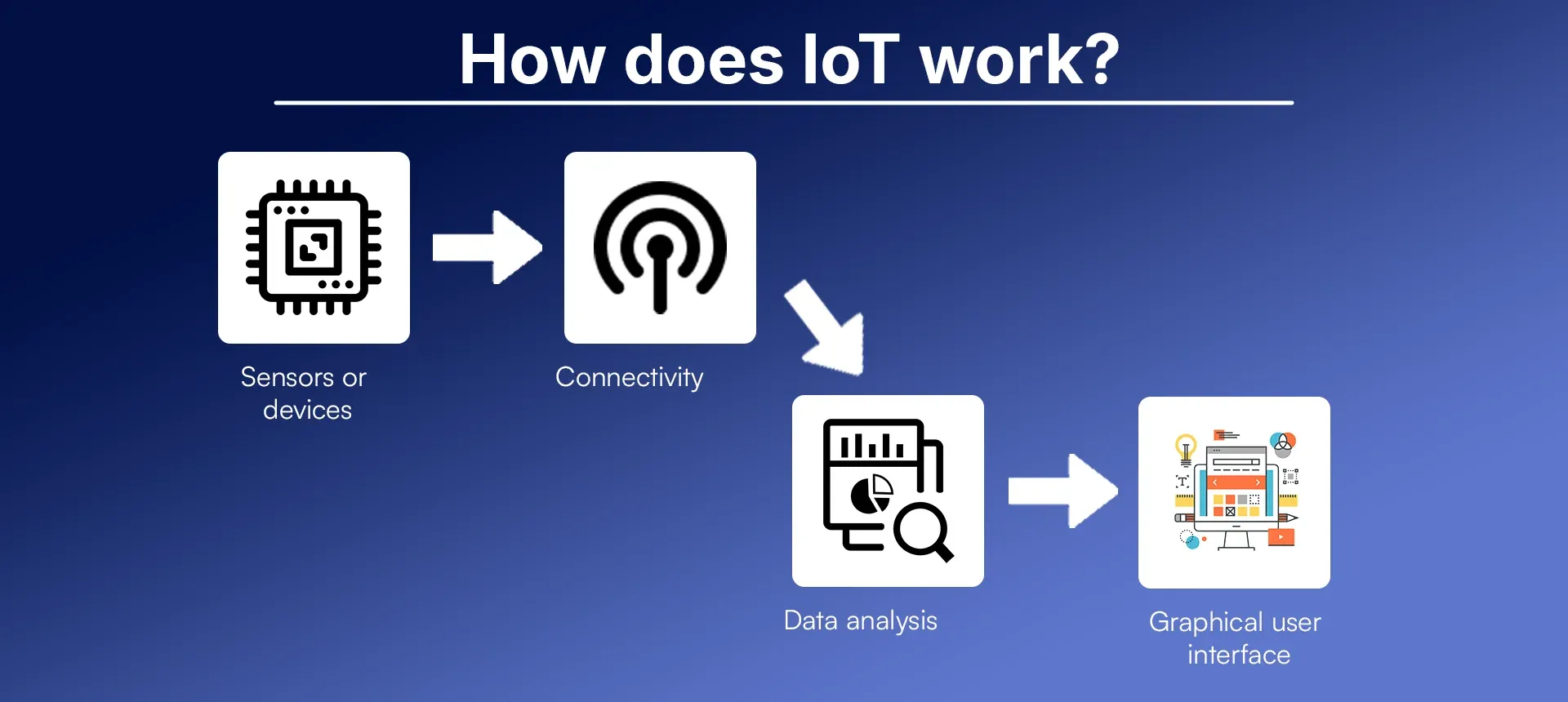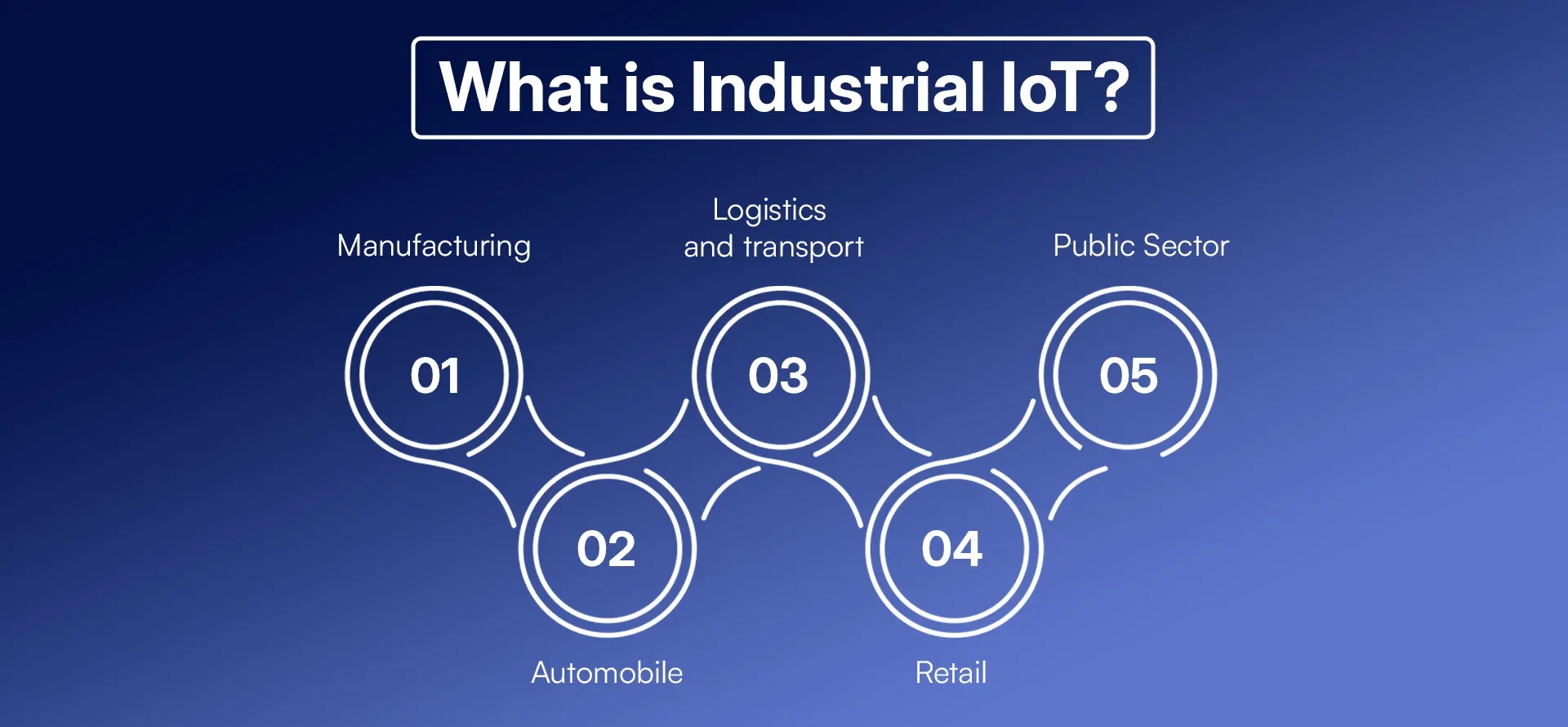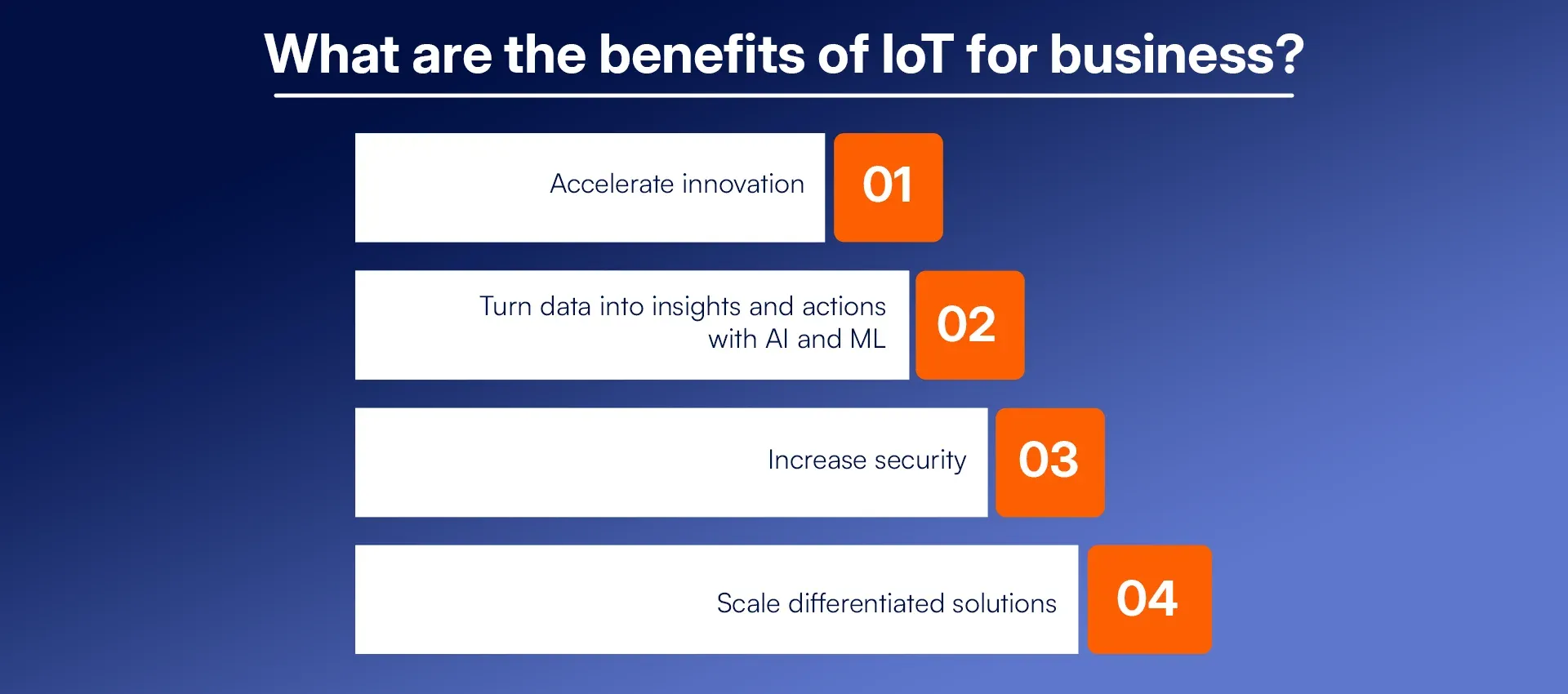
Remember how Tony Stark(from Avengers) had this amazing home with almost everything automated.
Lights, shower, coffee machine, everything was automated and it felt like far future.
But, its not, we are living in times when all these is possible.(Except Iron man flying)
Have you seen the sci-fi movies where everything is futuristic and automated?
Well, IoT is already making it possible. It is making our lives easier. If you look around, we have smart gadgets for personal use and at our homes. And it is not limited to that only, IoT is also used in industries. With IoT, businesses can increase the overall productivity and save cost.
We have created this guide so you can learn how IoT works and why is it important. We will also discuss some of its usecases in different industries.
What is the Internet of Things (IoT)?
IoT stands for Internet of things. Its like a network where all the physical devices are connected to the internet.
Just like how human talks to each other and find solutions for a problem, IoT devices can talk to each other and make us more productive.
What happens is the data is collected from the device. And it is sent to the server/cloud for processing. Once processed the output is delivered back to the device. The output is based on the different usecases the device is built for. All this happens in a real time.
It seems like a small thing but it is helping us automate tasks, optimize processes, and improve decision-making.
They are designed and built based on different use cases. Be it personal or industrial IoT devices can transform how we live and work.
How does IoT work?

1. Sensors or devices
These are like the eyes and ears of IoT. Sensors and devices are the starting point of every IoT system. It can be anything like a simple motion detector or a complex like smart assistant for your home devices. They collect specific data based on what they are designed and programmed for. For example, when you turn ON the AC, and set it on auto mode. It automatically adjusts the temperature based on surrounding.
2. Connectivity
Once the data is collected, the devices have to send the data for processing. The data is usually sent by Wi-Fi, bluetooth and cellular networks. The medium they choose for depends on the availability of specific connections and the amount of data that needs to be transferred.
3. Data analysis
This is where the magic happens. The transferred data is raw and has to be processed and analyzed to turn it into actionable information. For example, if your smartwatch records unusual heart rate patterns, it will send you a notification. Most businesses use either cloud computing or edge computing to analyze data as it makes the process quick and efficient.
4. Graphical user interface
This is the last step. If all this data is collected and processed, the results have to be delivered to the user. How the data is delivered depends on the use case. For example, your smartwatch data will be sent to your smartphone, while in industries, the data from the machine is usually displayed on the screens fitted with the machine, so the end user can make sense of it.
Why is IoT important?

1. Improved efficiency
IoT automates different processes and reduces manual labor. For example, in the automobile industry, IoT devices are used to monitor the health of equipment they are using. Also, these devices are integrated with robots, so they can communicate the issues and let the engineers know when the maintenance is required. Without IoT devices, engineers can only make a guess of what's going wrong. But with IoT devices, they get a better picture of what needs improvement.
2. Data-driven decision-making
Businesses are able to make better decisions with IoT technologies. Since all the data is being collected in real time from sensors, it can help businesses find patterns and trends like energy consumption in homes and peak hours in a store. With these insights, businesses and individuals can make informed and timely decisions to manage resources and improve services.
3. Cost-savings
By analyzing the data in real time, IoT devices can help predict the maintenance and failure. It helps businesses to do maintenance before the machine breaks down. This predictive maintenance approach reduces the cost and downtime for businesses.
4. Enhanced customer experience
We live in the world where generative AI is taking its place. When the data collected by IoT devices is fed to AI algorithms, they can offer personalized suggestions based on user behavior and choices. AI combined with IoT can help businesses develop smart chatbots for their users. Its like talking to your data and trying to make sense of it. YOu can ask whatever you want and get a suggestion for the same.
Also read this article : IoT Application Development Services
What are IoT applications?
IoT applications are systems that use machine learning and AI algorithms to analyze large amounts of data collected from the sensors. This data is cloud-based and offers you real-time insights into KPIs, statistics and other information based on your use case. Since it uses ML and AI for data analysis, it helps identify patterns and informs users about the discrepancies. In some industrial use cases, there are pre-set actions that machines perform automatically whenever IoT devices send alerts to them.
What are some ways IoT applications are deployed?
1. Create new efficiencies in manufacturing through machine monitoring and product-quality monitoring.
IoT devices act like your smart industrial monitors. They monitor both the machines and quality of product. Everything is analyzed in real time so whenever a machine is working unusual or there are defects in product quality, it is immediately reported and fixed.
2.Improve the tracking and “ring-fencing” of physical assets.
IoT devices allow you to keep track of every physical asset's location in real-time. Also, you can protect valuable assets from theft and removal, as ring-fencing is designed to notify you immediately when any unusual changes are made in the system.
3. Use wearables to monitor human health analytics and environmental conditions.
IoT enabled wearables helps you to monitor your health vitals and in high risk environments, it allows businesses to keep track of their employees well-being.
4. Drive efficiencies and new possibilities in existing processes.
Cloud based IoT applications make it a lot easier for businesses to make changes in their business processes. Businesses can build new processes and improvise existing ones with data collected from these devices. For example, in Amazon warehouses, they use robots to find products and pack them. They are interconnected and can talk to each other, which makes it a lot easier when operating at scale. Imagine, humans trying to find 1 piece of teacup among 1000s of products available. Not feasible, right!
What is Industrial IoT?

When you apply IoT in industrial settings, its called Industrial IoT. Similar to daily applications, it connects IoT-enabled machineries to the internet. It collects and sends data in real-time to optimize the processes and improve worker safety.
1. Manufacturing
IoT sensors enabled machines collect data and help predict maintenance requirements. These automated systems allow manufacturers to improve efficiency and maintain quality by reducing wastage and defects.
2. Automobile
The auto industry uses IIoT to develop connected cars. These vehicles can update drivers on traffic conditions, diagnose engine issues, and even schedule maintenance automatically. Self-driving car technology also relies heavily on IoT data.
3. Logistics and transport
IIoT enables real time tracking of goods and delivery route optimization. Sensors monitor the condition of goods in real-time to ensure that they are delivered in perfect condition.
4. Retail
IIoT makes stock level tracking and identifying consumer trends a lot easier. Also, in-store sensors help identify customer traffic to manage resources during peak hours and sensors on shelves inform staff when the product requires restocking.
5. Public Sector
Governments are using IoT for smart city initiatives. It includes smart parking systems, connected traffic lights and intelligent waste management systems. It helps governments make cities more efficient and eco-friendly.
What are the benefits of IoT for business?

1. Accelerate innovation
IoT provides real time insights and these insights act as a catalyst for innovation. It helps businesses make data driven decisions while developing new products, and improving customer experiences.
2. Turn data into insights and actions with AI and ML
IoT generates vast amounts of data. When combined with AI and machine learning, businesses can gain powerful insights and automate actions. For instance, a smart store can adjust air conditioning based on customer footfall or a connected factory can schedule maintenance based on machine usage.
3. Increase security
IoT devices can improve safety by monitoring systems for vulnerabilities and providing alerts before issues escalate. They can also enforce security policies across devices in real time.
4. Scale differentiated solutions
IoT makes it easy to expand services as your business grows. With cloud and edge computing, businesses can quickly add more devices, integrate new functionalities, and respond to customer needs without a hitch.
What are IoT technologies?
IoT technologies are a network of interconnected devices that communicate and transfer data over the internet. It includes sensors, software and connectivity explanations allowing real-time tracking and automation in different applications such as smart homes, industrial automation, healthcare and transportation thereby enhancing efficiency, convenience and data-driven decision-making.

-
Edge Computing
In IoT devices, the speed of response is very important. So, edge computing helps process the data close to where its generated. It reduces the latency and helps get faster decisions which is very important in applications like autonomous vehicles.
-
Cloud Computing
IoT devices collect a lot of data and we can not keep storing all the data on physical devices. So, the cloud offers a convenient place to store and process this data. Also, with the cloud, it becomes easy to access the data anywhere, anytime.
-
Machine Learning
As IoT devices collect more data, machine learning algorithms make sense of it. This enables predictive analytics, automation, and smarter systems that adapt to user behaviors.
Also read this article : IoT Application Development Guide for Boosting Efficiency & Growth
IoT standards and frameworks
IoT standards and frameworks are guidelines, protocols or inter-ratified technology to ensure interconnection, interoperability, security and most importantly efficiency in the IoT ecosystem. They enable devices/machines/things to communicate, share data and perform tasks seamlessly over the platform/internet. The protocols like MQTT, CoAP etc., and frameworks like OpenIoT can help build consistent, scalable and secured IoT implementation across the industry.
-
MQTT (Message Queuing Telemetry Transport): MQTT is similar to WhatsApp(But for IoT devices). Its a lightweight messaging protocol that allows physical devices to communicate quickly. It’s perfect when the devices need to send updates in real-time.
-
CoAP (Constrained Application Protocol): CoAP is like a smaller, lighter version of the web protocol (HTTP). But it is built for devices that don't require much power or memory like smart bulbs or small sensors.
-
OneM2M OneM2M is like a universal translator for IoT devices. Different manufacturers build different IoT devices. But the whole point of IoT is they should be able to talk to each other. So, OneM2M frameworks ensures that all devices and systems can talk with each other.
-
IoT Security Foundation (IoTSF): The IoTSF is like the security guard for all your connected devices. These foundations have created guidelines, so your IoT devices are safe and your data is secure.
IoT security and privacy issues
1. Data Vulnerabilities IoT devices constantly collect and share data. It makes them easy targets for hackers. So, if the devices lack security features, hackers can easily access the data.
2. Poor Authentication Many IoT devices don’t come with complex passwords and multi factor authentication. Usually a common password is used for them. This makes it easier for hackers to access the device and its data.
3. Lack of Security Updates Many IoT devices are not built to receive regular updates or security patches. So, security issues are often left unaddressed. So, they are prone to potential attacks.
4. Privacy Concerns with Data Collection IoT devices collect large amounts of data. It includes personal data like health, location and more. So, there is a risk of data being misused and sold without consent.
What is the history and future outlook of IoT?
Back in 1980s, in the US, IoT was introduced for the first time. When the first internet connected coke vending machine was launched. It was used to track inventory and temperature. Internet was a new concept back them so the IoT technology didn’t really got much attention.
But after 3 decades, im 2010, when internet was easily available, it took off. Everything including sensors were available easily. The connectivity was good and computers were much more advances.
And today, we live in a completely different world. We use smart gadgets like watches, rings, lights and more.
The future definitely looks promising. According to one research, we will have 75 billion devices by 2025.
IoT is going to be in every part of our lives. And we are already seeing it happen- self driving cars, smart homes, etc. This is all because of IoT.
Conclusion
If you are someone planning to implement IoT in your business, remember it involved a lot of complexity. Be it hardware, software, security and more. It is always a great choice to take professional help when building such complex systems.
At Rejoicehub LLP, we are a company with expertise in providing IoT Services. We are experts in building automation solutions using IoT. With our experience and expertise, businesses can automate tasks and save cost.
Not just that, we provide future ready solutions. So, businesses can stay ahead of their competition and adapt quickly to changing demands.
Connect with our team today and lets discuss the future of IoT in your business.
Frequently Asked Questions
What is the Internet of Things (IoT)?
IoT is basically a network wherein physical devices are connected to the internet. They communicate with each other and exchange data. It's like one human talking to another to find a solution to a problem. IoT does exactly the same thing. Here, devices can talk to each other and make decisions based on what they are programmed for.
How does IoT work?
In IoT, most things start with the sensors. Sensors collect the data and send it to a server or cloud. It is then processed and then signals the device to take a specific action. It depends on the use cases, like if you wear a smartwatch and your heart rate is very high. The watch will inform you that your heart rate is very high.
What are the types of IoT?
There are four types of IoT: Consumer IoT Commercial IoT Industrial IoT Infrastructural IoT
What are some common examples of IoT?
When you commute to work or school in a bus or metro, you will notice that the doors automatically open when it stops. One other example is AC, that we use regularly. It automatically sets the temperature based on the environment.
